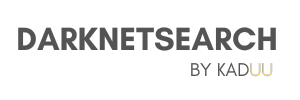➤Summary
Organizations must comply with ISO 27001:2022 by October 2025. Darkweb monitoring has become a significant part of this certification. The updated standard brings new requirements for threat intelligence, data leak prevention, and web filtering.
The new threat intelligence mandate (Control 5.7) now requires organizations to analyze information about potential threats. This makes dark web monitoring an essential requirement. ISO 27001 certification costs vary between AUD 5,000 to AUD 15,000, so organizations should clearly understand these new requirements. The standard emphasizes that threat intelligence should be relevant, perceptive, contextual, and useful at strategic, operational, and tactical levels.
Your ISO 27001 compliance plan needs darkweb monitoring. We will help you understand how to implement it properly and meet the new certification requirements effectively.
Understanding ISO 27001’s Dark Web Requirements
The latest ISO 27001:2022 standard introduces Control 5.7, which makes threat intelligence a pioneering component of information security management [1]. Organizations now must collect and analyze security threat information, and dark web monitoring has become crucial.
New threat intelligence mandates in ISO 27001:2022
Control 5.7 requires organizations to get into their threat environment regularly through government agency reports and spot potential threat sources [1]. The standard highlights three distinct intelligence layers: strategic, tactical, and operational [2]. Strategic intelligence tracks high-level changes in threats, tactical intelligence covers how attackers operate, and operational intelligence looks at specific attack patterns.
Role of dark web monitoring in compliance
Dark web monitoring acts as a proactive cybersecurity measure by scanning hidden internet areas where cybercriminals trade stolen data [3]. On top of that, it helps organizations detect potential breaches early and adjust their security stance. This monitoring also shows compliance with various regulatory requirements, including ISO 27001’s new threat intelligence mandates [4].
Key components of Control 5.7
The standard defines these vital components to implement threat intelligence:
- Clear objectives for intelligence production
- Verified internal and external information sources
- Systematic collection and analysis procedures
- Well-laid-out communication protocols [2]
Organizations must ensure their threat intelligence stays relevant, perceptive, contextual, and useful [1]. This approach lets businesses quickly identify compromised data and take preventive steps before cybercriminals exploit vulnerabilities [3].
Dark Web Monitoring Implementation Strategy
Dark web monitoring starts with a full picture of your organization’s security posture. This assessment reveals specific vulnerabilities and shows what needs to be monitored [3].
Setting up monitoring infrastructure
The monitoring infrastructure needs high-performance computing systems that can process large volumes of data [5]. Organizations should build secure network architecture with isolated networks and advanced firewalls [5]. Companies must go beyond simple solutions and invest in sophisticated data storage and management systems. These systems will handle the substantial volume of collected intelligence [5].
Choosing the right dark web monitoring tools
The right monitoring tools should have these key features:
- Real-time alerting systems that notify the core team in marketing, legal, and fraud departments [6]
- AI-powered detection that recognizes suspicious patterns and automates threat identification [7]
- Detailed coverage of dark web forums, marketplaces, and encrypted chat rooms [7]
- Data correlation features that cross-reference dark web data with internal company information [8]
Integration with existing security systems
Your monitoring solution should combine smoothly with your current security infrastructure [5]. This integration makes automated threat intelligence systems better at enriching collected data [6]. Organizations can feed the captured intelligence into Security Information and Event Management (SIEM) systems and Extended Detection and Response (XDR) platforms [9].
The implementation has three main stages. The service provider first creates a full picture of the situation. Next comes the integration phase that combines automated and manual data collection methods. The maintenance stage follows with regular updates and staff training [3]. This approach helps organizations keep their monitoring continuous while they respond to emerging threats.
Threat Intelligence Framework Integration
Dark web intelligence plays a vital role in ISO 27001’s threat intelligence requirements. The standard defines threat intelligence as “information relating to information security threats that shall be collected and analyzed” [10].
Mapping dark web data to ISO requirements
ISO 27001 splits threat intelligence into three distinct categories: strategic intelligence to understand high-level threats, operational intelligence for attack details, and tactical intelligence for attacker methods [10]. Dark web monitoring meets these requirements through continuous surveillance of underground forums, marketplaces, and private channels [11].
Data collection and analysis procedures
The collection process follows these steps:
- Data Gathering: Automated tools work with manual processes to index information that shows potential breaches
- Verification: Teams authenticate collected data to confirm its legitimacy
- Processing: Teams organize information into structured formats
- Analysis: Security teams review patterns and extract meaningful insights [12]
Creating practical intelligence
Security teams turn analyzed data into practical intelligence through systematic review. They filter out noise and irrelevant information to focus on useful data [11]. This process helps identify new threats, detect breaches early, and prevent cyber attacks [13].
Dark web monitoring services work as vital security tools that turn cryptic underground information into useful insights [14]. Organizations can use this valuable threat intelligence to gain a strategic advantage in threat hunting and cyber defense. The process needs significant resources, but the intelligence helps organizations spot weaknesses in their cybersecurity infrastructure [13].
The framework makes shared incident response possible through investigation workflows [6]. The collected data improves existing threat intelligence systems and creates more accurate insights from the whole security stack [6]. This approach lines up perfectly with ISO 27001’s need for continuous monitoring and threat assessment.
Risk Mitigation Through Dark Web Intelligence
Dark web monitoring works as a powerful early warning system against insider threats. 74% of organizations say they face moderate to high vulnerability to these threats [15]. Security teams can detect potential breaches 194 days earlier than traditional methods with this proactive approach [7].
Early warning system benefits
Dark web monitoring works like a digital canary that alerts organizations when their credentials and confidential information get exposed. This happens before bad actors can take advantage of them [6]. The monitoring helps teams understand who potential attackers are and what methods they use [6]. Security teams can quickly spot stolen credentials, trade secrets, and proprietary information. This reduces exposure time and stops more information from leaking [6].
Incident response enhancement
Dark web intelligence boosts incident response capabilities through:
- Quick breach detection and containment
- Threat actor profiling and tracking
- Post-incident analysis and recovery planning [16]
Organizations that use dark web monitoring handle security incidents faster [16]. When teams combine dark web data with their existing security systems, they can assess threats better and create targeted defense strategies [6].
Compliance documentation best practices
Good documentation of dark web monitoring helps meet ISO 27001 compliance requirements [17]. Security teams need clear procedures to:
- Track detected threats and exposure incidents
- Record response actions and outcomes
- Keep audit trails for compliance checks [3]
Regular monitoring shows an organization’s steadfast dedication to spotting threats early and managing risks [3]. This method meets regulatory requirements and proves the organization’s due diligence in protecting sensitive data [3].
Conclusion
Dark web monitoring is the life-blood of organizations that want to meet ISO 27001:2022 certification requirements. This security measure provides more than just compliance benefits. It helps detect threats early and manages risks reliably.
Organizations get these valuable benefits from dark web monitoring:
- Swift identification of potential data breaches
- Improved incident response capabilities
- Detailed threat intelligence at strategic, tactical, and operational levels
- Clear documentation trails to verify compliance
Security teams with dark web intelligence find threats 194 days earlier than traditional methods. They also build stronger defenses against insider threats. This proactive strategy arranges well with ISO 27001’s focus on threat intelligence and risk management.
Dark web monitoring has evolved from an optional security tool to a must-have component for ISO 27001:2022 compliance. Organizations should update their security frameworks. They need proper systems to monitor, analyze, and respond to meet Control 5.7 requirements.
Modern cybersecurity needs watchfulness in every possible threat vector. Dark web monitoring gives this vital visibility to protect assets and maintain compliance. Security teams must make this capability their priority as they prepare for ISO 27001:2022 certification before October 2025.
References
[1] – https://www.isms.online/iso-27001/annex-a/5-7-threat-intelligence-2022/
[2] – https://hightable.io/iso-27001-annex-a-5-7-threat-intelligence/
[3] – https://www.kroll.com/en/insights/publications/cyber/deep-dark-web-monitoring-business-uncovering-hidden-risks
[4] – https://foresiet.com/blog/explore-the-importance-of-dark-web-monitoring-in-enhancing-organization-cybersecurity-and-mitigating-potential-risks
[5] – https://www.cm-alliance.com/cybersecurity-blog/best-8-dark-web-monitoring-tools
[6] – https://www.crowdstrike.com/en-us/cybersecurity-101/threat-intelligence/dark-web-monitoring/
[7] – https://www.sentinelone.com/cybersecurity-101/threat-intelligence/dark-web-monitoring/
[8] – https://www.sentinelone.com/cybersecurity-101/threat-intelligence/dark-web-monitoring-tools/
[9] – https://www.xenonstack.com/blog/dark-web-monitoring-soc-automation
[10] – https://www.threatq.com/iso-27001-welcomes-threat-intelligence/
[11] – https://www.breachsense.com/blog/dark-web-monitoring-guide/
[12] – https://publication.osintambition.org/transforming-dark-web-data-into-cybersecurity-intelligence-1224566e2719
[13] – https://flare.io/learn/resources/blog/dark-web-analytics/
[14] – https://www.recordedfuture.com/blog/dark-web-monitoring
[15] – https://blogs.manageengine.com/active-directory/log360/2024/07/29/dark-web-monitoring-as-your-early-warning-system-for-insider-threats.html
[16] – https://taqtics.ai/dark-web-threat-intelligence/incident-response-with-dark-web-data/
[17] – https://www.iso.org/standard/27001
Your data might already be exposed. Most companies find out too late. Let ’s change that. Trusted by 100+ security teams.
🚀Ask for a demo NOW →Q: What is dark web monitoring?
A: Dark web monitoring is the process of tracking your organization’s data on hidden networks to detect leaked or stolen information such as passwords, credentials, or sensitive files shared by cybercriminals.
Q: How does dark web monitoring work?
A: Dark web monitoring works by scanning hidden sites and forums in real time to detect mentions of your data, credentials, or company information before cybercriminals can exploit them.
Q: Why use dark web monitoring?
A: Because it alerts you early when your data appears on the dark web, helping prevent breaches, fraud, and reputational damage before they escalate.
Q: Who needs dark web monitoring services?
A: MSSP and any organization that handles sensitive data, valuable assets, or customer information from small businesses to large enterprises benefits from dark web monitoring.
Q: What does it mean if your information is on the dark web?
A: It means your personal or company data has been exposed or stolen and could be used for fraud, identity theft, or unauthorized access immediate action is needed to protect yourselfsssss.


Leave a Reply